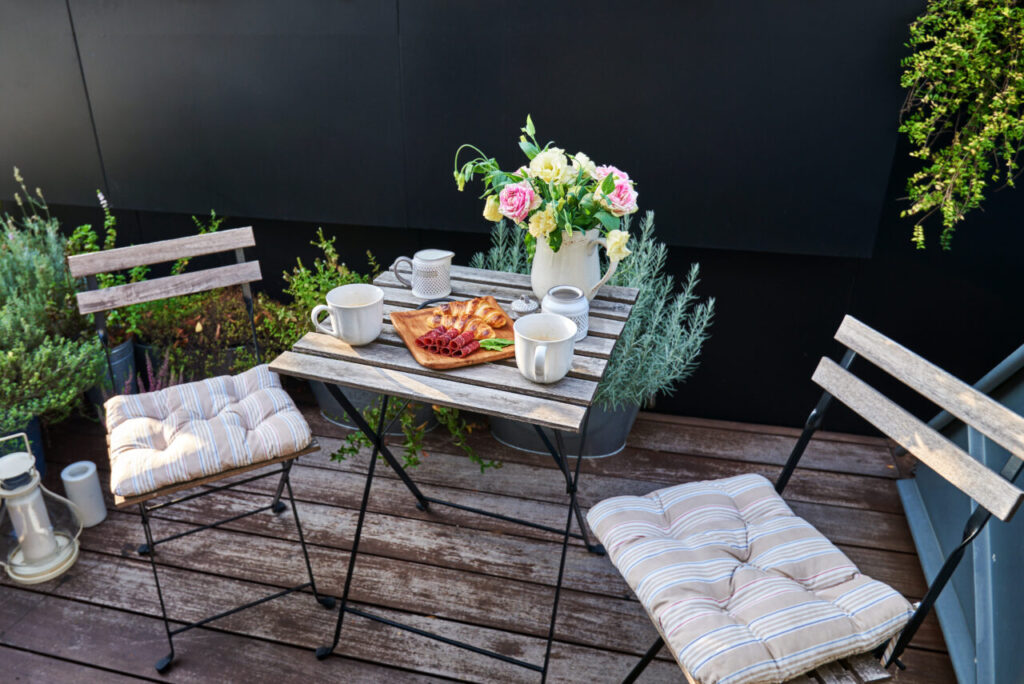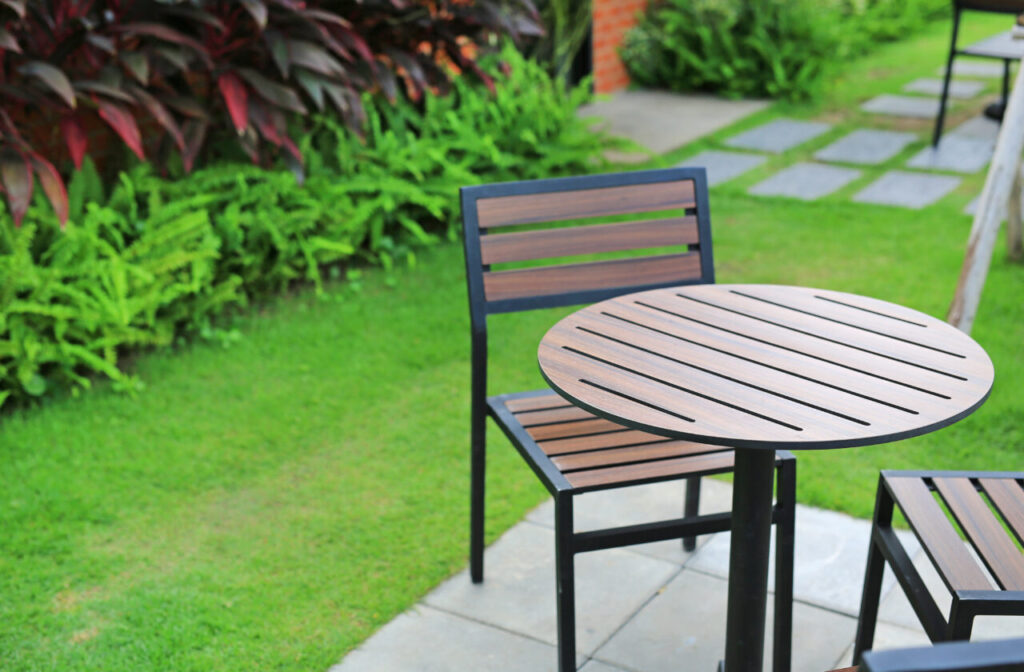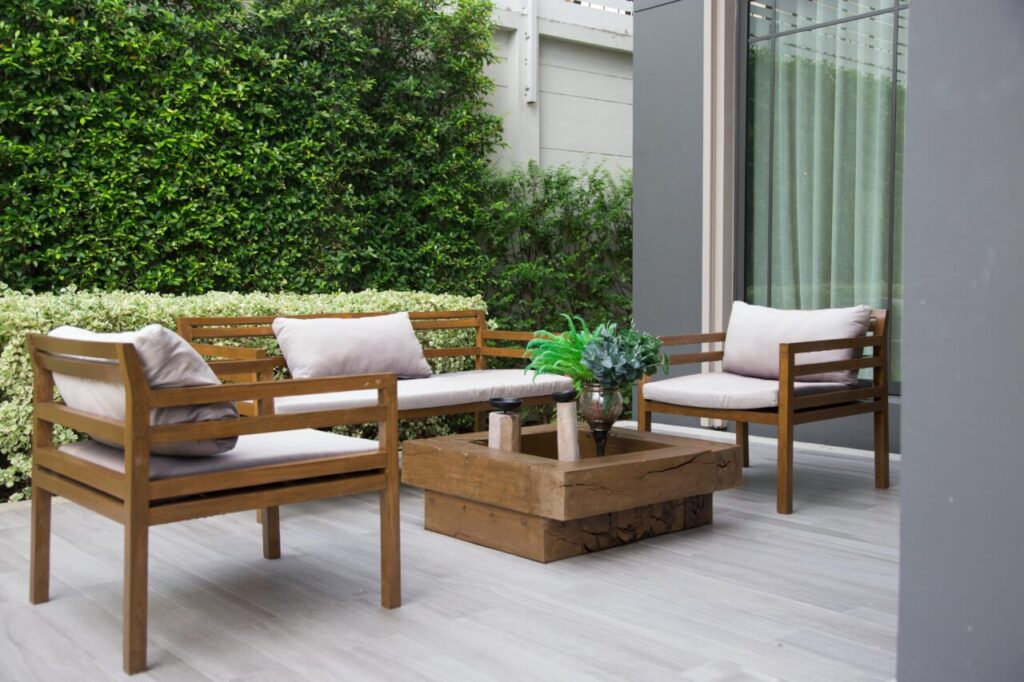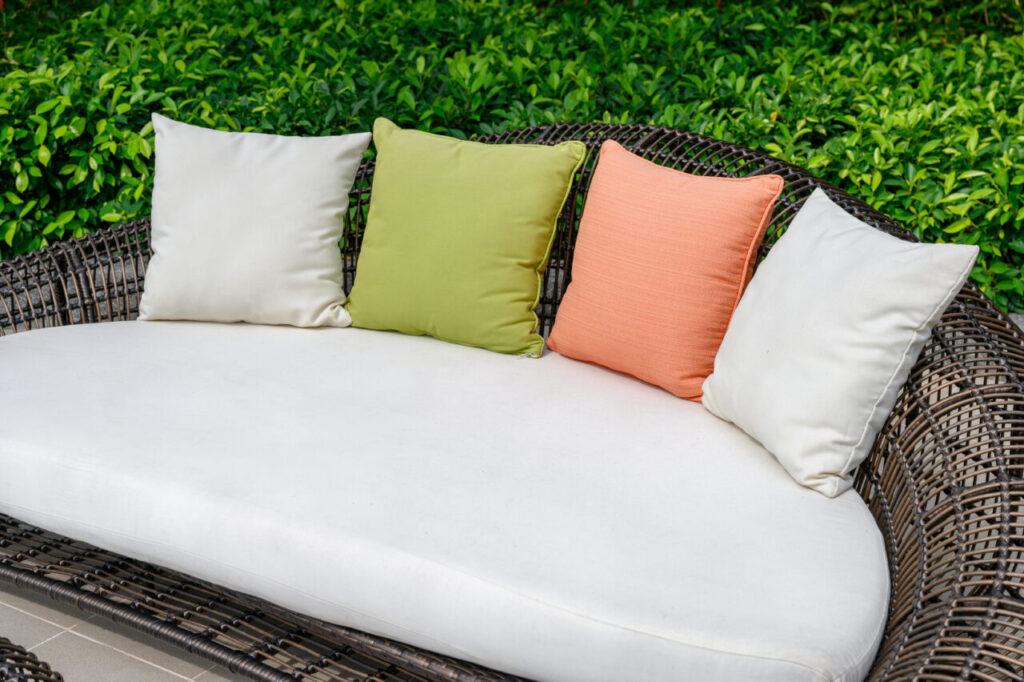Choosing the right furniture for any outdoor living space can be hard—there’s so much to consider, and so many materials and styles to choose from. Not only do you need to choose furniture that fits your space, but you’ll also want to choose the right colors and materials. Plus, you need to make sure it will last when it’s kept outside.
This can be the most difficult part to accomplish, since many materials don’t fare well in extreme weather. If you’re looking for furniture that will last, hold up to the elements and leave the lowest footprint, we’ve shared our tips for finding the best outdoor furniture below.
Consider the weather
The outdoor furniture you choose should be able to stand up to many different weather conditions. It has to if it’s going to hold up in all seasons while outside.
Moisture
One serious thing to consider is moisture created by wet weather. If you live in an area where you experience a lot of rain, or where it’s quite humid, you’ll want to ensure your furniture is resistant to water damage. Moisture and water can physically degrade many materials overtime and can even lead to health risks from things like mold and rust. Many newer materials repel water and/or allow water to move quickly through cushions. This is particularly important when considering placing furniture near pools, or if you live in a wet climate.
Mold and mildew
Moist and humid conditions can create an environment where fungi just love to thrive. Organic materials that hold water are more susceptible to mold and mildew. This can cause health problems, including respiratory issues and irritation.
In early stages, mold and mildew won’t permanently damage the material and can be cleaned off. If left to rot, however, the material will most likely biodegrade or decompose. You could consider furniture that is water resistant, like the items made by Neighbor. Neighbor’s furniture is durable and uses mildew resistant fabric by Sunbrella. Their cushions are also made from quick drying, highly porous, yet dense foam.
Rust & corrosion
Most metals are vulnerable to corrosion when they are exposed to water and oxygen continuously. This process can weaken metal overtime, resulting in rust and discoloration. Salt in the air and water can speed up the chemical process. This means that rust is often more prevalent in coastal areas that have more moisture in the air and where it gets windy. (1)
Warping
Most materials that do retain water can dry unevenly when the weather gets warmer. This can result in warping, twisting or bowing of the original furniture’s shape. It might not be too noticeable at first but over time it can become more and more obvious and, in some cases, can distort so much you won’t be able to use the item anymore.
Heat
If you live in a region that is more accustomed to warmer weather or even just more severe shifts between cold and hot, you’ll want to get outdoor furniture materials that can withstand damage from heat and harsh UV rays.
Fading
Continual exposure to the sun can cause some materials to fade and lose their color over time. This change can be aesthetically pleasing in some cases, but in other cases patching can appear and there can be a decrease in luster and vibrancy. This can make your outdoor living space feel old and worn down.
Cracking
Some materials expand and contract when they are overheated or cooled. This can cause them to warp, become brittle and crack or split due to the temperature fluctuations and extreme heat. Dry air can also be a factor in bending or cracking furniture.
Heat retention
There are materials that retain a lot of heat and can be uncomfortable to use and sit on because of this. Anything that’s left out should not be capable of retaining too much heat from the sun. In fact, wood can actually heat up relatively easily and, if left out in heat for too long, can be as dangerous as hot water. (2)
Cleaning and care
Another factor to consider is how easy the materials are to clean and care for. You might find the best furniture out there, but if it requires too much attention, or needs to be deep cleaned to keep its luster, it might not be worth the effort. Some materials are easily cleaned with soap and water every now and then, but others require more intensive care and specific cleaning products. If you’re time is valuable, you might want to opt for something that’s less of a hassle.
Cost
Along with what the material looks like, the cost is probably the biggest thing people think about when buying outdoor furniture. The financial implications are usually at the top of people’s lists. If you have a budget, you’ll want to look at furniture made from more affordable materials. At the same time, more expensive materials are often more durable and will probably need to be replaced less often.
When considering affordability, think about long term costs too, like the cost of care and how long a given material will last.
Eco-friendly
There is an environmental impact created through almost any production process, especially when it comes to any items made using raw materials. If this is something you care about and care about the impact your items have on the world, look for furniture that’s made from ecologically friendly materials. Many brands these days have adopted green manufacturing processes, but it’s still always a good idea to do your research before making any purchases.
Know your materials
For frames and tabletops, some materials—wood (when properly finished), metal such as stainless steel or wrought iron, and even synthetic materials like resin and plastic—work very well for an outside setting. Each material will have its own method of care and level of durability, but all will need basic maintenance.
When it comes to fabrics for cushions, acrylic fabrics that are entirely manmade are usually stronger and more resistant to weather than other options. Acrylic fibers are best at resisting mold and mildew and can hold up well against general wear and tear. Another choice is olefin fabric which is durable, fade resistant and quick-drying. It does the job just as well as acrylic fabric and is less expensive. It’s very lightweight and smooth but doesn’t have the same softness as other fabrics. This is a great option if acrylics are out of your budget. (3)
Ready to choose
Choosing the right furniture comes down to understanding the benefits and the care needed for the materials that make up the item. Check its durability in cold, wet climates as well as warmer climates too. From deck chairs, to outdoor coffee tables, you can make the right choices by doing your research and choosing suitable materials for your region and needs.
References
- “What exactly is rust?” Source: https://www.ncheurope.com/en/what-is-rust
- “Heat Retention,” Source: https://www.scienceprojects.org/heat-retention/
- “What is Acrylic Fabric?” Source: https://revolutionfabrics.com/blogs/gotcha-covered/what-is-acrylic-fabric
For more blogs about your backyard, check out these:
Easy Backyard Improvements for Outdoor Entertaining





